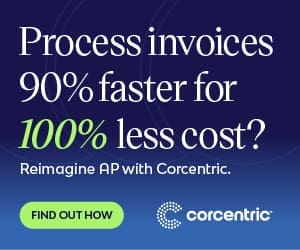Guide To Maximizing Procurement Savings Through Source-To-Pay Software

Procurement Savings Tracking Software
Finance executives and professionals charged with maintaining and managing procurement processes need to stay up-to-date on the latest business intelligence related to the best available software products to inform and update decisions. Utilizing source-to-pay software to maximize procurement savings and optimize logistics performance is now an integral part of the financial executive’s toolkit in the current economic environment. With the proper analysis of available source-to-pay software and implementation of successful software plan, business can leverage existing financial data to craft conditions for reaching maximum savings potential.
I. Understand the Softwaresolutions Landscape.
The first step to maximizing procurement savings through source-to-pay software is to conduct the necessary research to understand the available Softwaresolutions and the complexity of the procurement savings tracking process. Understanding the software options cloud-based, on-premise, etc. and the nuances of how they operate to measure and report on procurement expenditure can make the process of identifying cost savings much easier. Once the research is completed, it is helpful to review the pros and cons of each solution to ensure the right selection is made for your business.
II. Set Financial Goals.
The second step is to translate the data on procurement savings tracking software into financial goal. This requires setting attainable benchmarks for savings based on cost data from previous reporting periods, looking at trends in past spending, and setting realistic time frame for reaching the desired target. Taking the time to review current spending and set financial goals for the future can pay dividends when it comes to achieving maximum efficiency and results.
III. Assess and Select Software.
The third step is to assess and select the procurement savings tracking software that best suits your business. This involves reviewing vendor proposals and contracts, understanding the licensing fees and model, and evaluating the data points and insights available through the software. Making the right Softwareselection can save time and money while providing the greatest access to financial visibility and robust data gathering.
IV. Establish Performance Metrics.
The fourth step is to establish performance metrics that are realistic and achievable. Developing careful system of performance evaluation based on the data gathered with the software will ensure that savings and desired goals are actually being met. This includes initial spending patterns and ongoing changes to ensure the financial goals are being met in an effective and efficient way.
V. Test the Software.
The fifth step is to thoroughly test the procurement tracking and savings software. This testing should focus on the primary use cases, client goals, and financial targets set in the beginning. The functional testing should be performed rigorously to guarantee that the software meets expectations and the goals of the project can be achieved.
VI. Monitor and Analyze.
The sixth step is to monitor the procurement performance achieved with the software and analyze the data on continual basis. An effective procurement savings tracking system should provide ongoing insight into how the software is helping to meet budget goals, identify opportunities and best practices, and understand where changes need to be made.
VII. Adjust and Maintain.
The seventh step is adjusting and maintaining the software in order to reach targets and continuously update goals. This is often overlooked when implementing new source-to-pay software but remains an important step in ensuring the maximum value is achieved. Adjusting the Softwaresettings based on changes in the market is essential for keeping up with the pace of procurement and savings performance.
VIII. Review and Report.
The eighth and final step is to review and report on the performance of the procurement savings software. This involves gathering information from multiple sources and compiling comprehensive report on the effectiveness of the software and how it is meeting the financial targets set in the beginning of the process. This can be pivotal in assessing current performance, optimizing future plans, and providing feedback to the appropriate stakeholders.
Conclusion
Using source-to-pay software to maximize procurement savings is increasingly becoming viable solution for financial executives with an eye to the future. Doing the proper research and setting financial targets before selecting and implementing procurement savings tracking system is key. Taking the time to adjust and maintain the system, monitor and analyze the results, and review and report the data can all result in maximum value and cost savings. By following the above steps, business can find the best source-to-pay software for their needs and put it to good use.

